This oven roasted eggplant with balsamic vinegar is my favorite simple way to prepare eggplant. It’s hands-off, flavorful, and versatile. You can serve the eggplant as a side dish, add it to grain bowls or salads, or fold it into your favorite pasta dish. If you’re a little intimidated by cooking eggplant, this is the starter recipe for you!
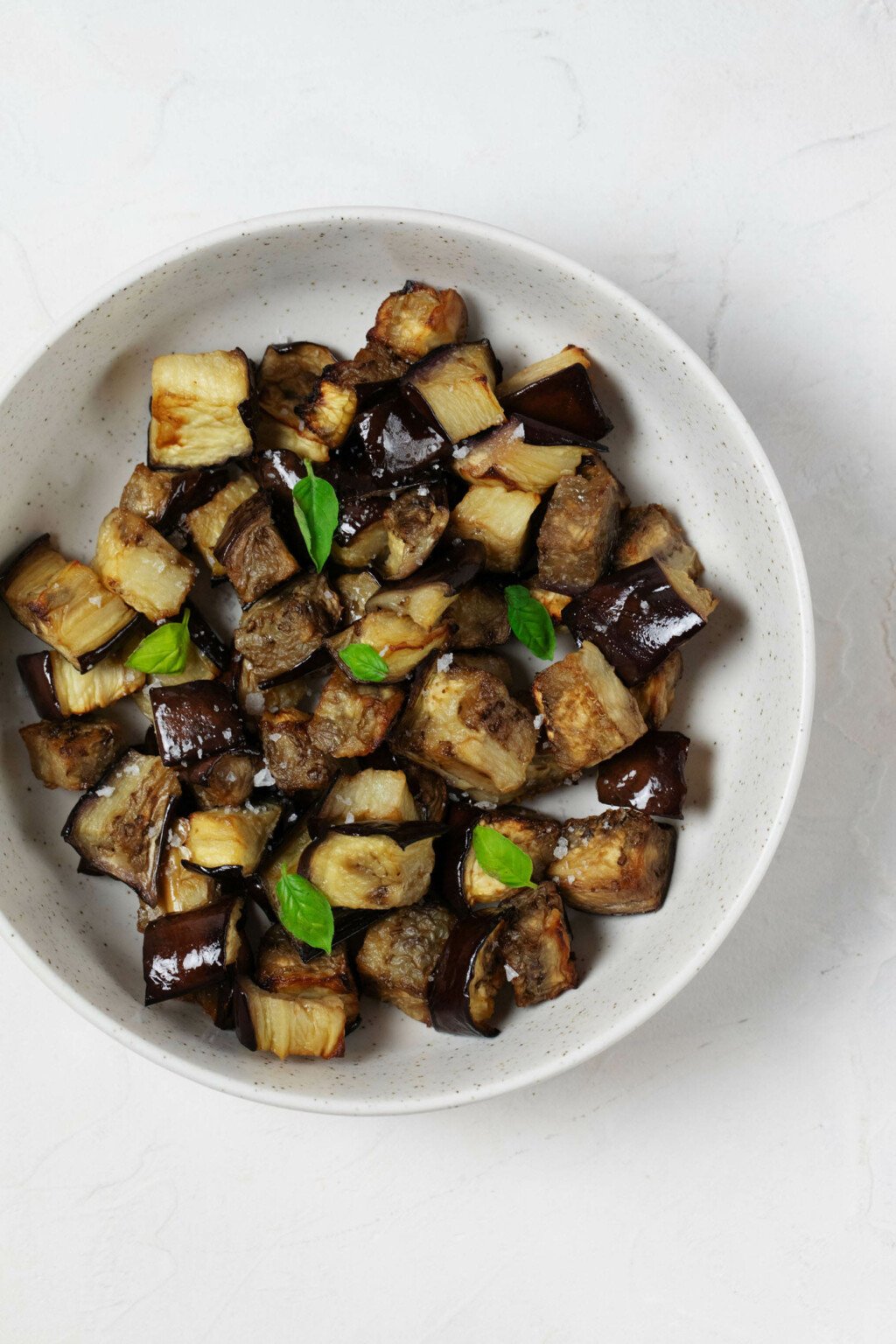
Does cooking eggplant scare you a little?
If so, you’re not the only one. People tell me all the time that they’re intimidated by the process of cooking this nightshade, and I can understand why.
If things go awry, cooked eggplant can become too oily or too dry. It can burn too quickly or refuse to brown when you want it to brown. Unless the vegetable is garden fresh, it can have some underlying bitterness.
Sometimes the more challenging vegetables are also the most rewarding to cook. Take beets, for example: they can be a little tricky, but they’re also delicious and healthful. That’s why I love my simple oven-roasted beets so much.
I also really love eggplant. As a result, I’ve developed some ways of preparing it that are free of hassle and big on flavor.
This recipe for oven roasted eggplant cubes is one of them. It’s my simplest, go-to eggplant recipe, and I want to share it with you today.
A solid side dish
A fun phenomenon that happens periodically within my nutrition practice is that several clients will articulate the same question to me around the same time.
Whether this is seasonal in nature, related to nutrition in the news, or just some an expression of collective energy, I’m not sure.
What it means is that my clients get me thinking about something, and I usually mull it over until I can give them a helpful answer.
Lately, a lot of clients have been talking with me about eating more vegetables—specifically vegetable side dishes.
I spend a lot of time coaching the folks I work with on macronutrient balance, or the importance of having complex carbs, protein, and healthful fat represented on each plate. This is a cornerstone of my nutrition philosophy, and it’s the principle that my cookbook Power Plates is dedicated to.
However, fruits and vegetables are also a vital part of balanced, nutritious meals.
When life is busy, it can be hard to know how to incorporate vegetables adequately. We all tend to have a vegetable side dish or two that we lean on heavily. For me, it’s a simple green salad or steamed broccoli with sauce.
There’s nothing wrong with having a reliable standby. But variety is important, too, both for the sake of nutrition status and also for avoiding boredom.
The question becomes, how can we get a wider variety of vegetables when merely deciding what’s for dinner already feels like a lot of work?
The answer—or my answer, anyway—is to have a short list of go-to vegetable sides that’s varied, yet not overly ambitious.
This roasted eggplant is always on that list.
Eggplant 101
A few basic fun and interesting facts about eggplant.
Eggplant nutrition
Eggplants belong to the nightshade family, which also includes tomatoes, potatoes, and peppers.
Eggplant is a nutrient dense food. It’s high in fiber and also a good source of folate and potassium.
What’s more, the pigments that give eggplants their beautiful array of purple shades are powerful antioxidants called anthocyanins.
Anthocyanins are associated with anti-inflammatory effects, and they may also be positively associated with cardiac health.
You may be surprised to read this, as nightshades are sometimes said to cause inflammation. What’s the truth?
As with so many nutrition matters, this is nuanced.
Nightshades contain compounds called alkaloids. Consuming very large amounts of alkaloids may exacerbate existing inflammation among people who have existing pro-inflammatory conditions, such as arthritis.
However, over time, research has continued to suggest that consuming nightshades as part of a balanced diet isn’t actually a cause of inflammation.
And not all people who have pro-inflammatory conditions will have an adverse reaction to nightshades. For most folks, these fruits and veggies offer more health benefits than they do risks.
I always advise my clients to listen to their bodies. If a client with arthritis or an autoimmune condition feels noticeably worse with a lot of nightshade consumption, then we work to reduce or avoid consumption of the nightshade family.
Otherwise, all nightshades, eggplants included, can be a nourishing and delicious part of any plant-centric diet.
Cooking with eggplant
Some of the fear factor around cooking with eggplant is that many recipes call for salting the vegetable before cooking it.
It’s not a difficult step. But it is an extra step.
The rationale behind salting eggplant is that salting will reduce the vegetable’s tendency to have some natural bitterness.
Salting likely isn’t needed when eggplant is very fresh and perfectly mature. But it’s helpful the rest of the time.
I also find that salting tenderizes eggplant, making it more palatable. More often than not, I salt eggplant before using it in my recipes.
For this oven roasted eggplant, however, I skip the salting. High temperature cooking reduces the need for eggplant to be perfectly tender. In fact, a little crispiness is part of the intention here.
From a flavor perspective, sweet and tart balsamic vinegar helps to offset any of the eggplant’s natural bitterness, if any bitterness is there in the first place.
Salting aside, I find that eggplant is actually a very forgiving and versatile vegetable to work with. It can be fried, sautéed, stewed, baked, or roasted. It can become salty, oven-baked eggplant “bacon” or a delightful pasta sauce.
The possibilities are many.
Types of eggplant
It’s worth saying something about different varieties of eggplant.
Most often, I buy glove, also known as American, eggplant. This is the type of eggplant that you’ll often see in grocery stores in the US.
It tends to be on the larger side, it has a slimmer top and wider bottom (pear-shaped, in other words), and it has a dark, glossy, purple black skin
Italian eggplants look similar to globe eggplants, but they’re smaller all around. Japanese and Chinese eggplants are long and thin in diameter; the former is a deeper purple, while the latter is usually light purple. All three of these varieties are especially tender and creamy when cooked.
There are more eggplant varieties, including the petite, stripey fairy tale eggplant, nearly round Indian eggplant, and white eggplant.
What type of eggplant should I use for this recipe?
For this roasted eggplant, I recommend using globe, Italian, graffiti, Chinese, or Japanese eggplants. You’ll see globe eggplant in my images.
Fairy tale eggplant and Indian eggplants will all work as well. You’ll simply need a bunch of them to add up to the approximate pound of eggplant that’s called for.
Simple seasonings
This roasted eggplant recipe calls for minimal flavoring. There’s one predominant flavor, which is balsamic vinegar.
If any ingredient is well-equipped to do some heavy lifting in a recipe, it’s balsamic! Sweet, tart, and distinctive, a couple tablespoons (or a big drizzle) of balsamic can immediately add a lot of personality to roasted vegetables, salads, or pasta dishes.
I usually keep a few kinds of balsamic at home. Excessive? Maybe, but they all do different things.
I keep inexpensive balsamic on hand for blending into dressings. This type of balsamic is usually on the thin side.
There’s also always a bottle of more syrupy Balsamic Vinegar of Modena in my pantry or on my counter. I use this for drizzling on top of pasta, braised lentils on toast, etc.
Finally, I like to keep some white balsamic around, too. This type of balsamic has a slightly more mellow profile than red balsamic. I use it whenever I want the flavor of balsamic without too much intensity.
For the roasted eggplant, white balsamic is actually my first choice. When I don’t have that, I use red balsamic instead.
There’s no need to pull out the fancy, unctuous balsamic for this recipe, unless you’d like to. A more budget-friendly, everyday variety is fine.
How to make oven roasted eggplant
Again, one of the nicest things about this recipe is that it’s simple. You don’t have to salt the eggplant prior to roasting, and the ingredient list is short.
Here are the steps.
Step 1: Preheat your oven
I find that 400°F / 200°C is the right temperature for this roasted eggplant recipe. When the oven is hotter, the eggplant can fry and burn before it really becomes tender.
When the oven is cooler, the eggplant may not develop those crispy edges and bits that give it nice flavor.
400°F is just right.
Step 2: Trim and cube your eggplant
I like to cut my eggplant into 3/4-1 inch cubes (2-2.5cm). I usually cut my eggplant crosswise into disks, then cut those disks into cubes.
One large, globe eggplant will yield about a pound of cubes after preparation.
Next, place those cubes onto a rimmed baking sheet. Drizzle them with olive oil, dust them generously with salt, and mix the cubes to distribute the oil.
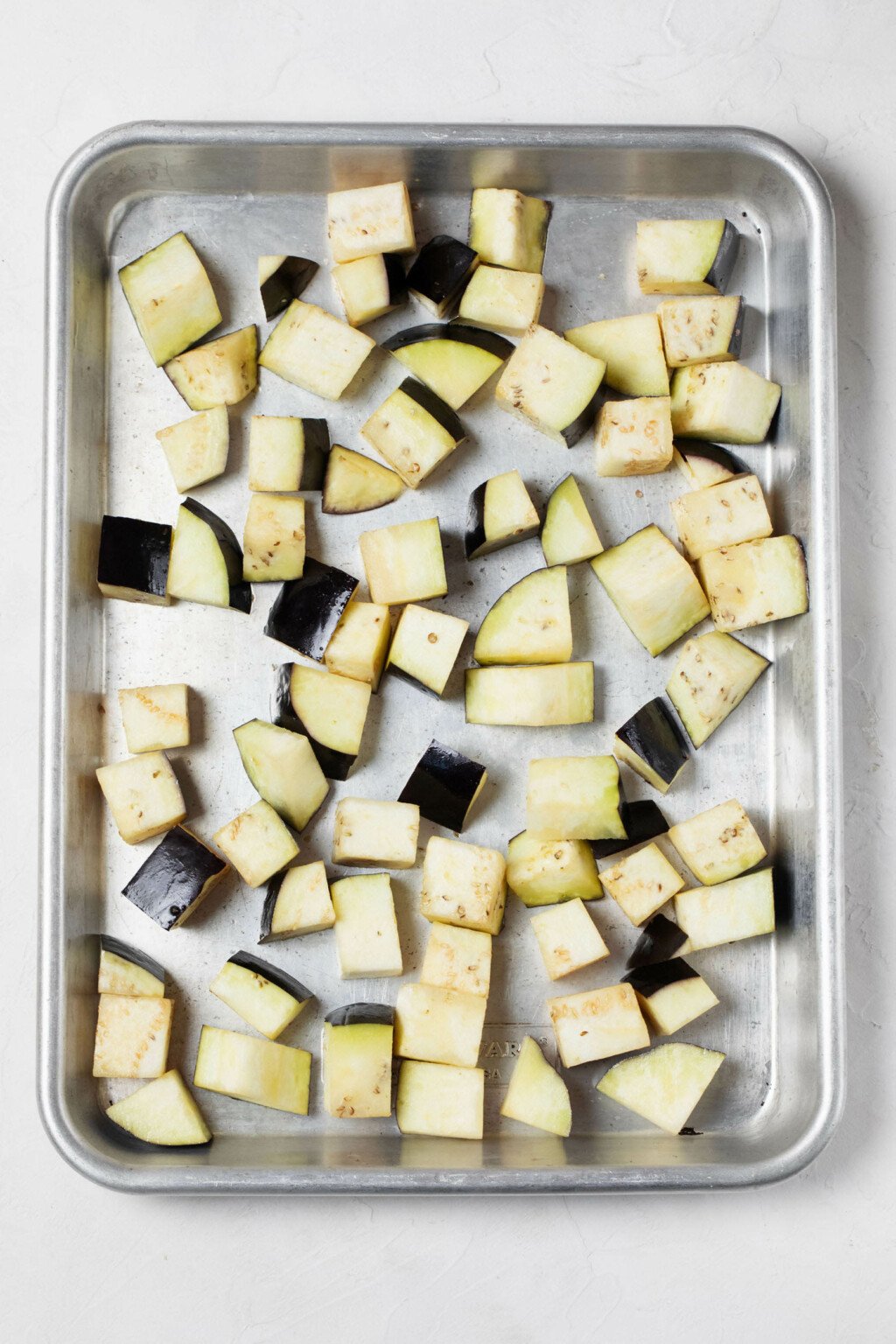
Step 3: Roast
Transfer the eggplant to the oven and roast it for 15 minutes, or until some of the edges are starting to crisp and turn golden.
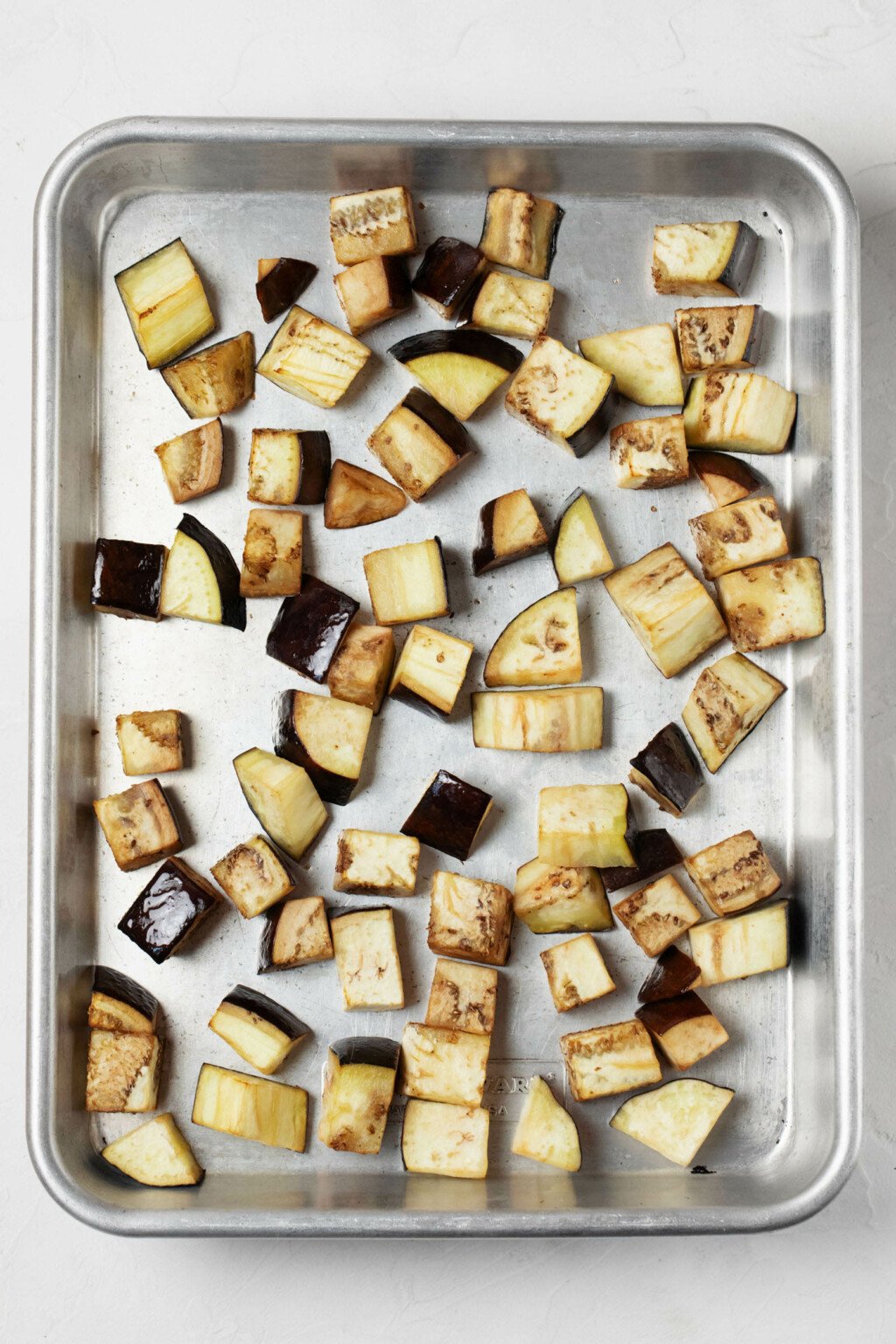
It’s time to add seasoning. Mix the eggplant on the baking sheet, then drizzle it with the vinegar. If you’d like to add a clove or two of minced garlic, now’s the time.
Return the eggplant to the oven. Roast for another 15-20 minutes, or until the eggplant is tender and caramelizing.
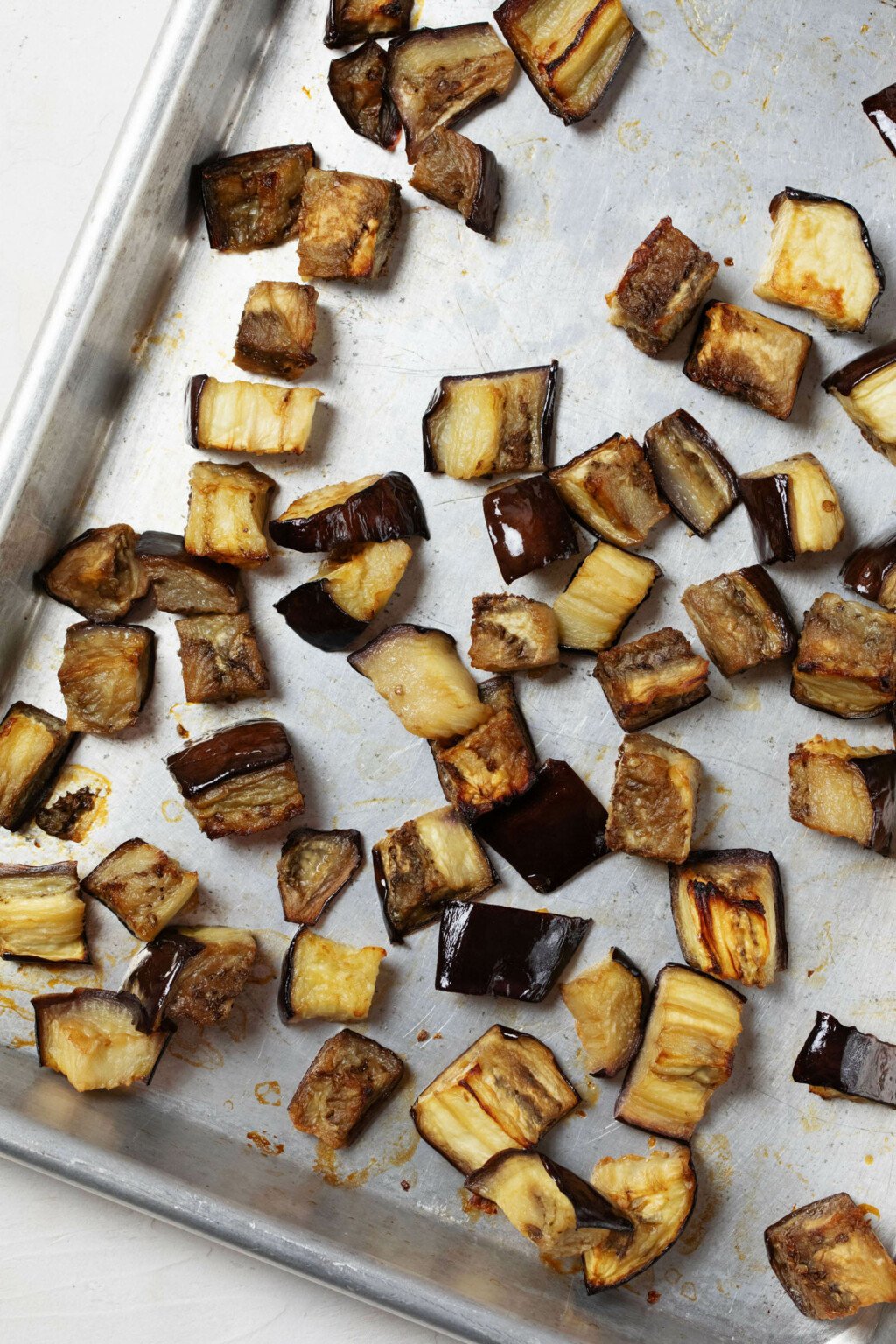
Before you serve the eggplant, you can taste it and add a little more salt, vinegar, or some crushed red pepper flakes, as you like.
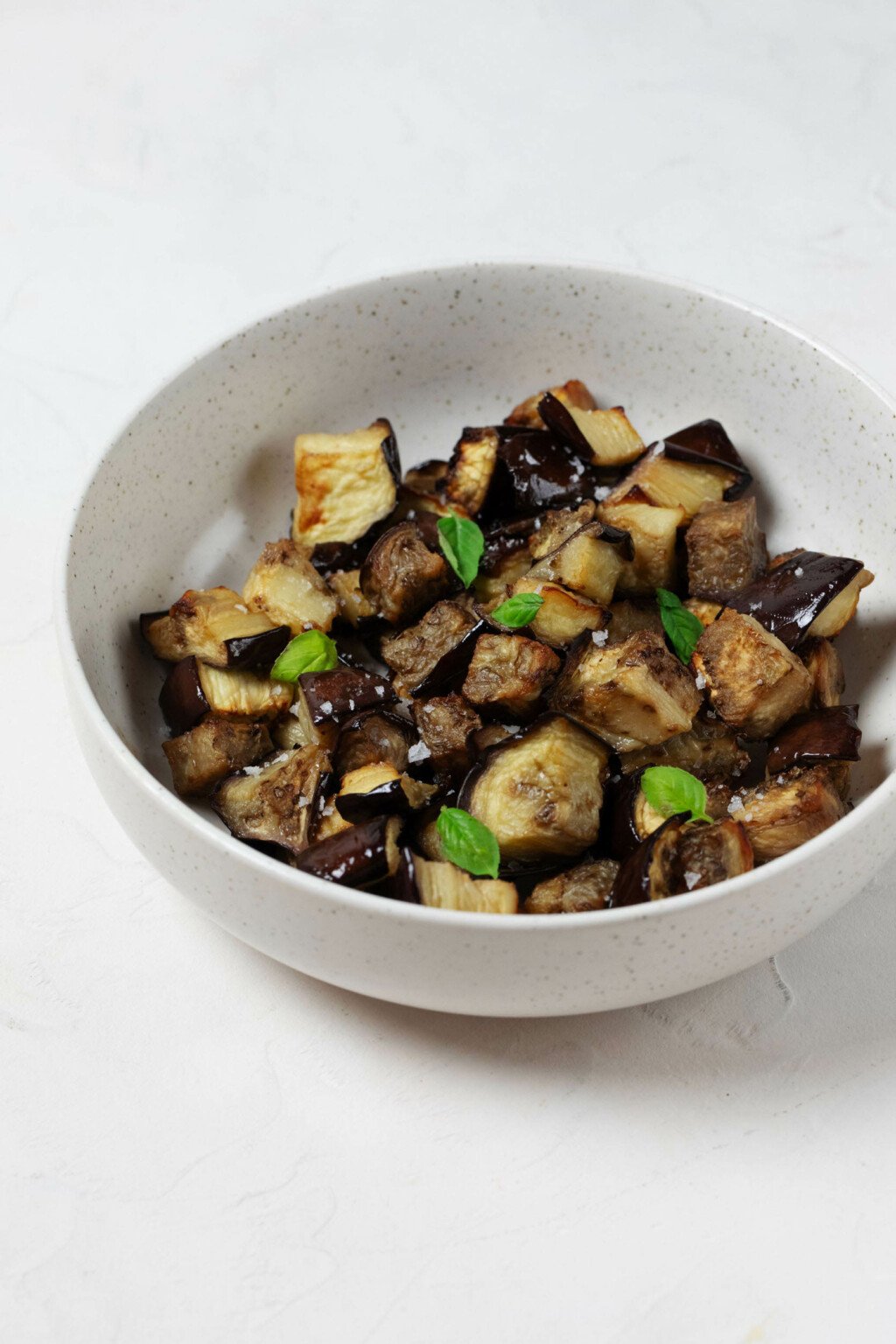
Step 4: Serve or store
Serve the eggplant now, or store it in an airtight container in the fridge for up to 4 days.
It’s easy to meal prep the eggplant, in a single batch or even a double batch, then enjoy it for some lunches and dinners in the days that follow.
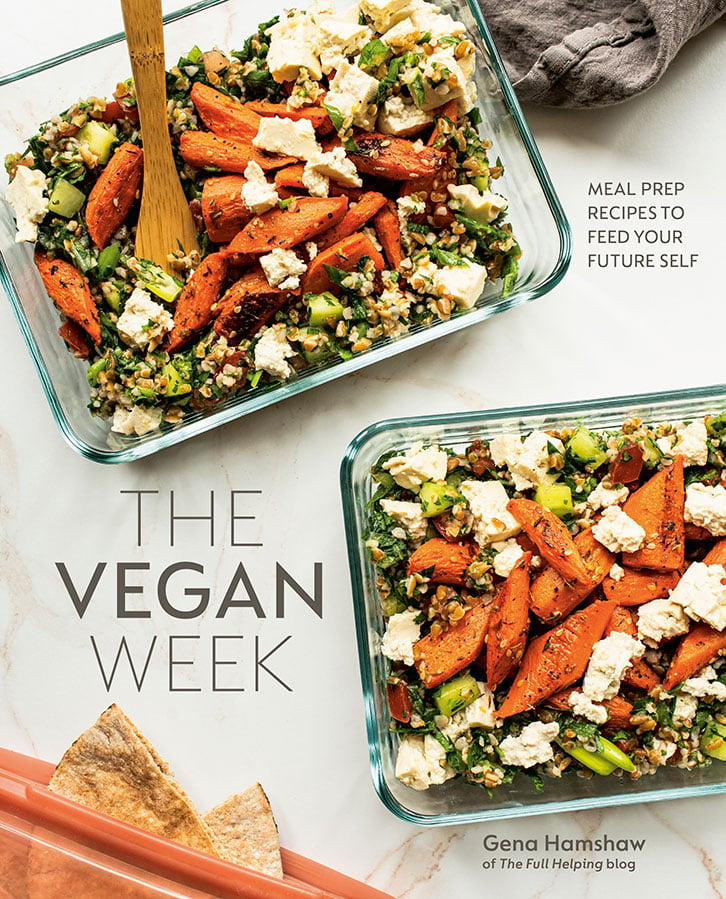
The Vegan Week
Embrace the joy of eating homemade food every day with the hearty and wholesome recipes in The Vegan Week.
Whether you have three, two, or even just one hour of time to spare, The Vegan Week will show you how to batch cook varied, colorful, and comforting dishes over the weekend.
Serving suggestions
I think it’s plenty delicious to toss the roasted eggplant cubes with some fresh basil and serve them as an accompaniment to any simple whole grain + protein combo.
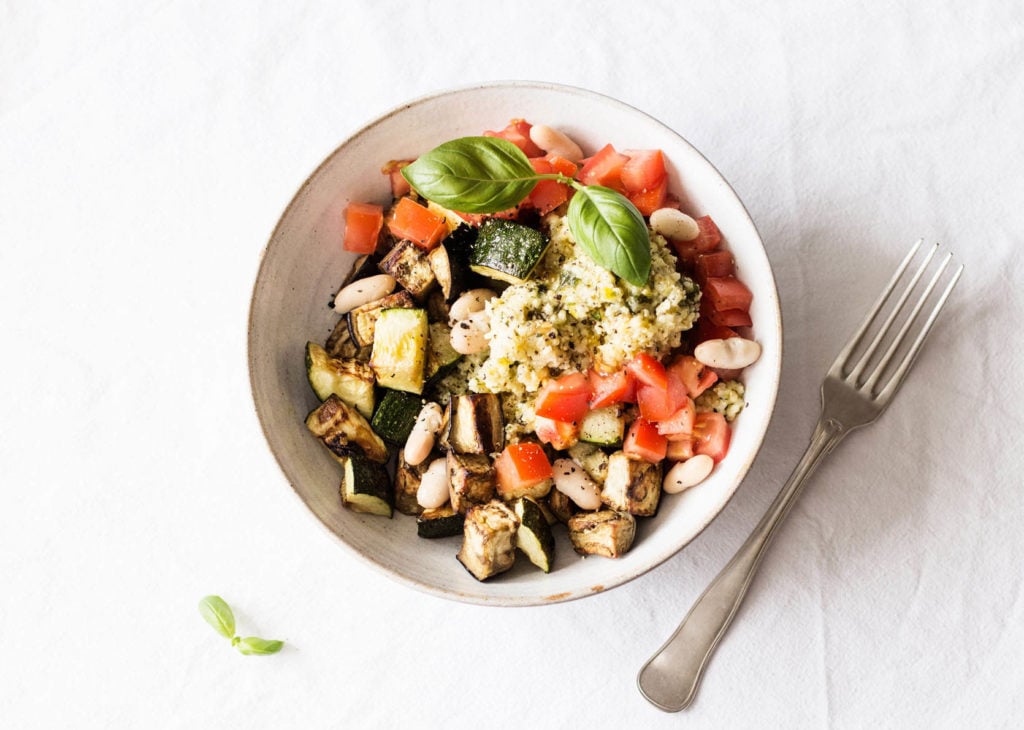
Eggplant’s peak season is late summer and early fall. So here are some seasonal grain pairing suggestions for you:
- Lemon dill zucchini & chickpea rice
- Quinoa with roasted tomatoes & chickpeas
- Gingery roasted butternut squash rice
For the protein, you could stay on brand and serve the eggplant with baked balsamic tofu cubes. Chickpea scramble, tempeh nuggets, or balsamic mustard baked tempeh would also be great.
There are so many big, meal-sized salads that would be even better with a scoop of the roasted eggplant cubes mixed in. I’m thinking of tahini mint kale salad and tofu feta kale salad in particular.
And my favorite thing to do with the eggplant cubes is, of course, to mix them into some cozy vegan pasta dish or another.
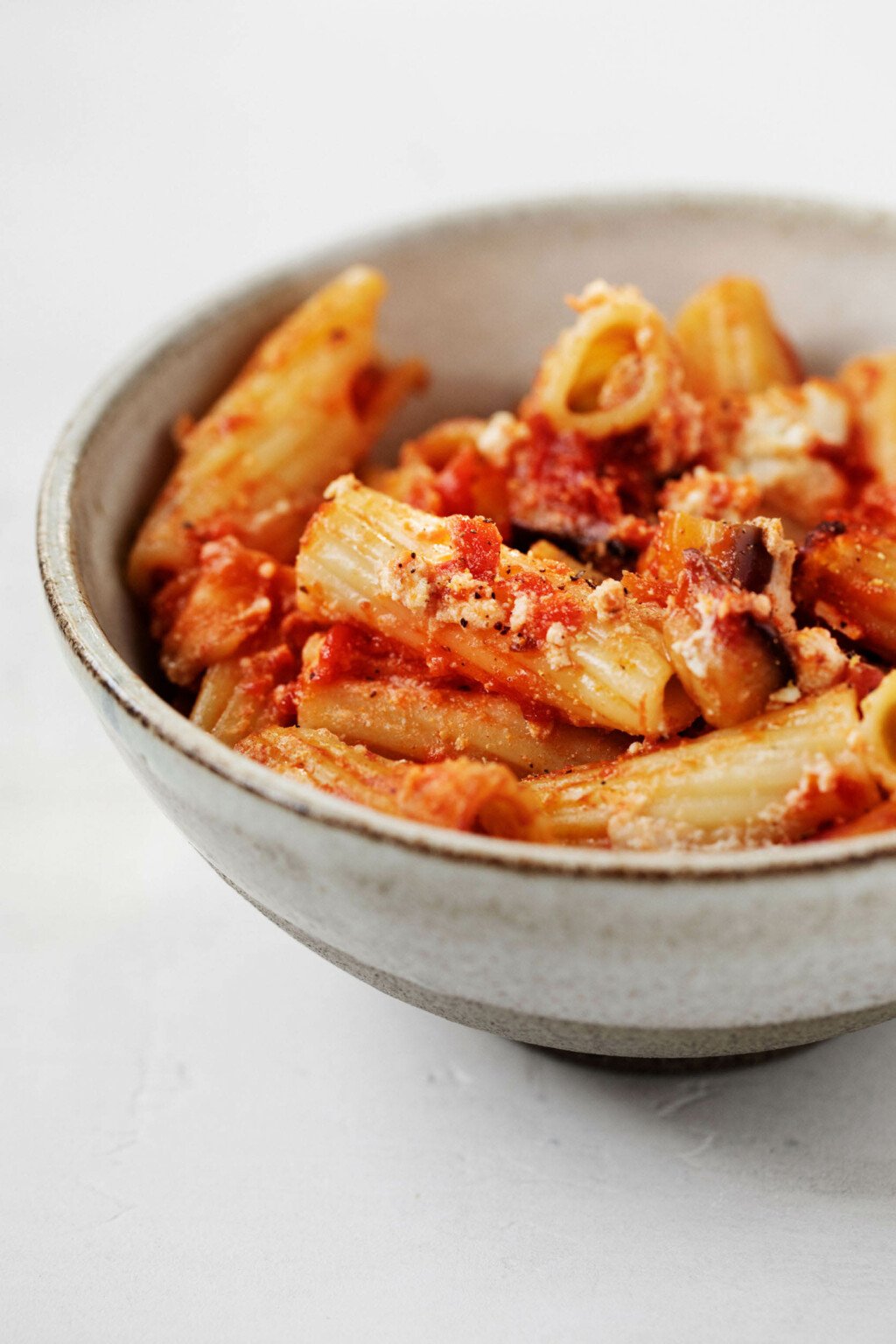
For example:
- Vegan sun-dried tomato pesto and pasta
- Vegan feta pasta with tofu feta cheese
- Cauliflower alfredo sauce and easy pasta
- Beans and greens pasta
- Easy vegan sausage mushroom marinara pasta
Anyway, I’m sure you’ll figure out many of your own enticing ideas. The main thing is to enjoy the eggplant! Here’s the recipe.
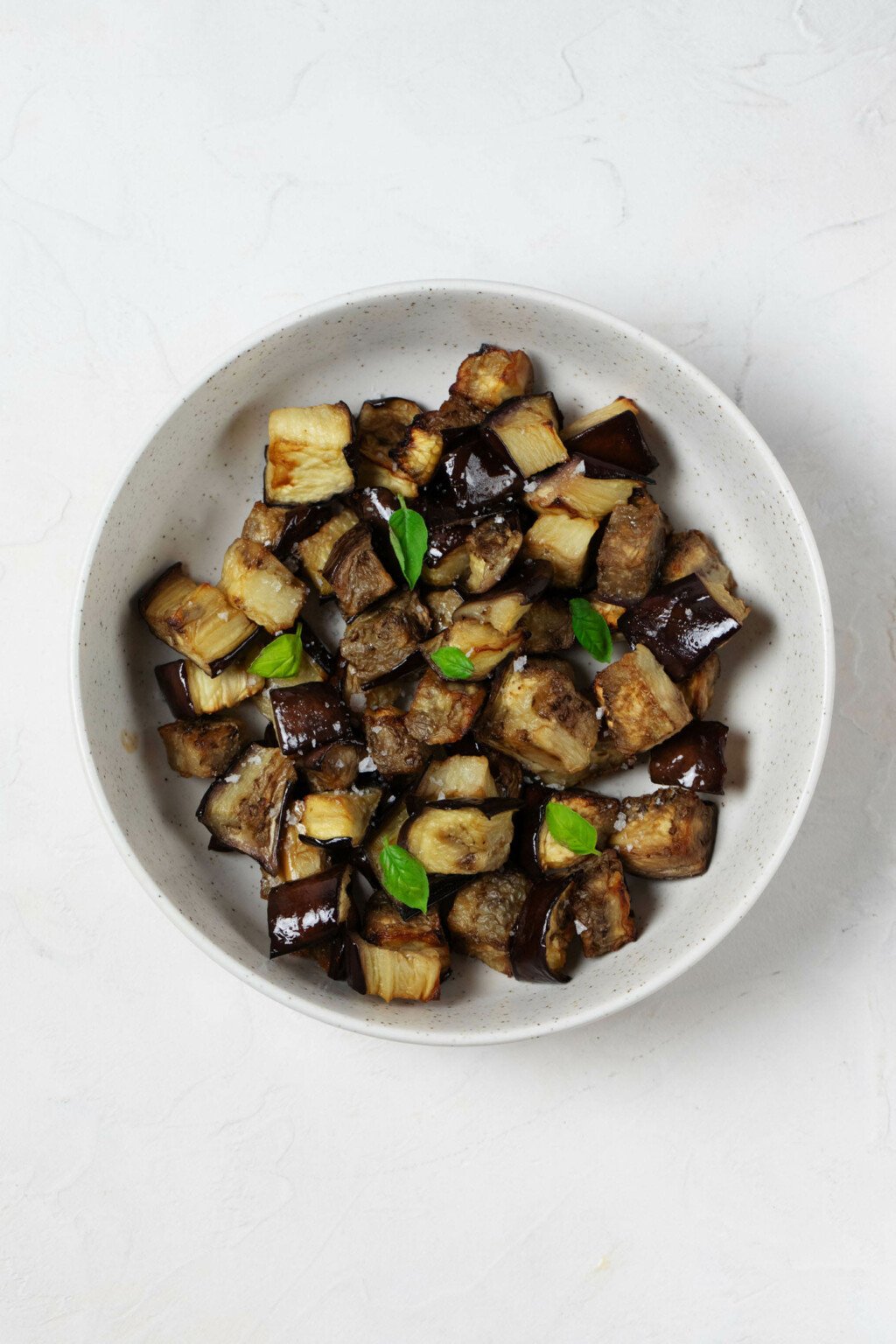

Oven Roasted Eggplant Cubes with Balsamic Vinegar
Author –Ingredients
- 1 large large, globe eggplant, top and bottom trimmed, cut into 1-inch / 2.5cm cubes
- 2 tablespoons avocado or olive oil
- kosher salt
- 2 tablespoons white or red balsamic vinegar
- 1-2 cloves garlic, minced (optional)
- crushed red pepper flakes (optional)
Instructions
- Preheat your oven to 400°F. Place the eggplant onto a parchment lined or nonstick rimmed baking sheet. Drizzle it with the oil and sprinkle it generously with salt.
- Roast the eggplant for 15 minutes, or until some of the edges are starting to crisp and turn golden. Drizzle the eggplant with the vinegar. Add the minced garlic, if using. Stir the eggplant well. Return the eggplant to the oven.
- Roast the eggplant for another 15-20 minutes, or until the it's tender and caramelizing. Taste the eggplant and adjust salt and vinegar to taste. Add a pinch or two of crushed red pepper flakes for heat, if desired.
- Serve the eggplant right away, or store it in an airtight container in the fridge for up to 4 days.
That’s a lot of excitement and enthusiasm over a very simple vegetable side, I know.
But in busy or difficult times it feels like such a win when nourishing ingredients manage to find their way consistently to our plates, right?
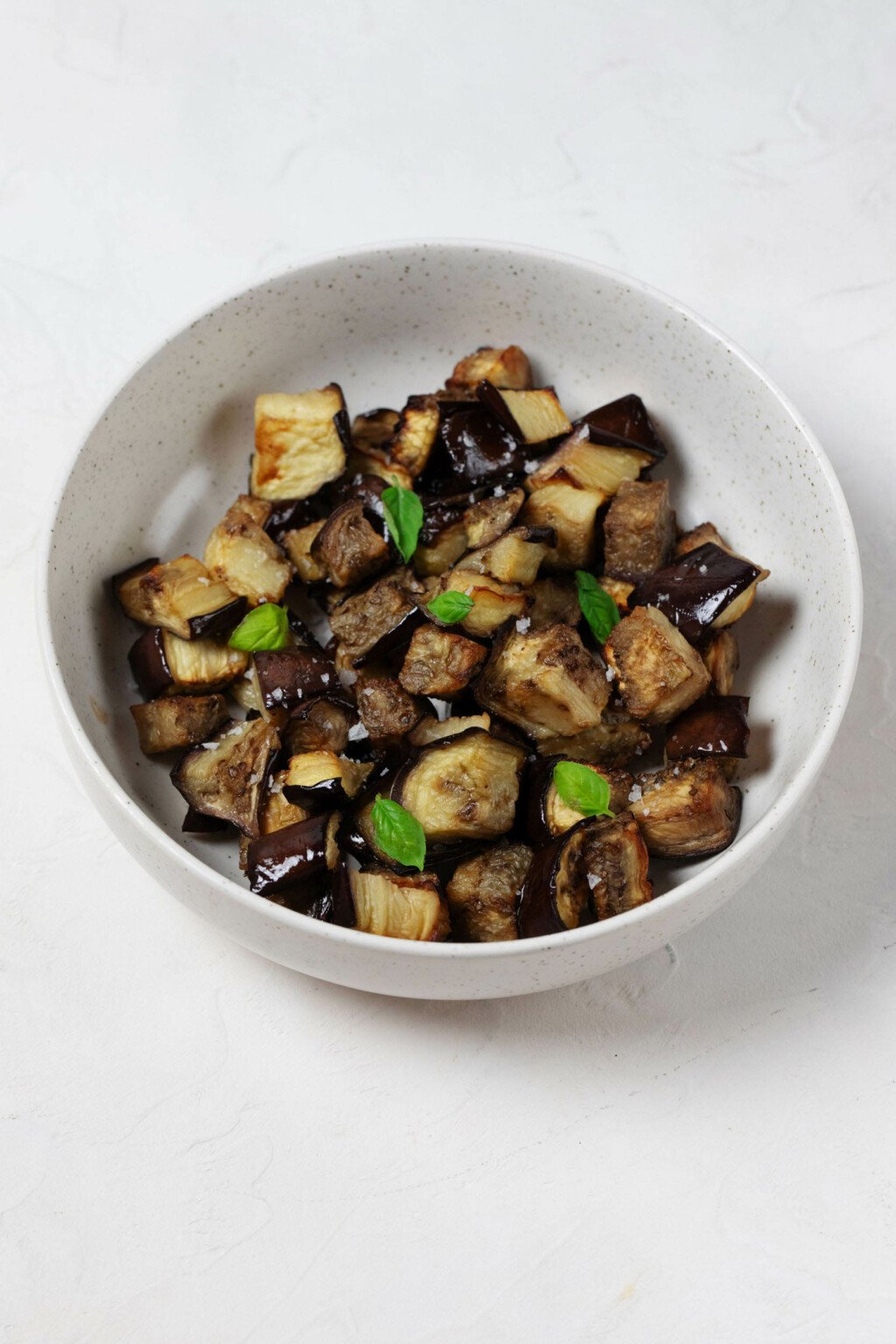
Prompted by my lovely clients and their questions, I’ll share more of my favorite, easy vegetable sides this fall and winter.
For now,
xo
This post may contain affiliate links. If you use these links to buy something I may earn a commission. Visit my privacy policy to learn more.
Dietary Preferences: Gluten Free, Soy Free, Tree Nut Free, Vegan
Recipe Features: Meal Prep

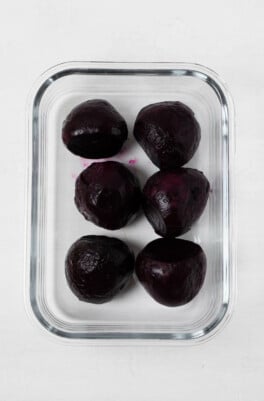
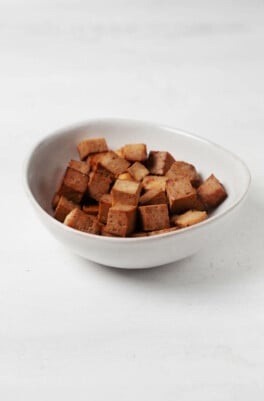
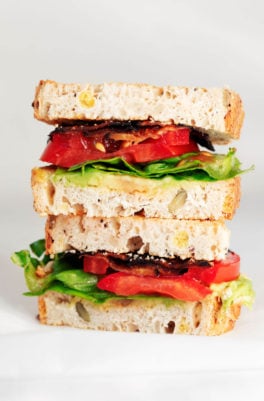
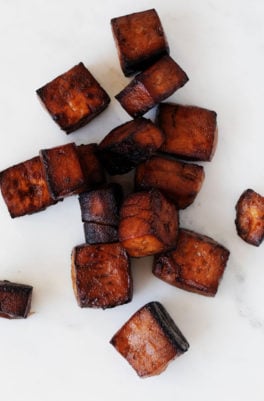
Leave a Comment
I have made this twice since I saw your initial posting last month. The first time, I forgot to add the Balsamic until I plated it (still major yummy). The second time I followed the directions. Not sure there was a difference in flavor. Super Easy, Fantastically delicious. I will be planting eggplant in the garden next year to insure I can have this frequently.
Hi Kathy. I’m so glad that you enjoyed the recipe in both cases—that’s what matters! 🙂